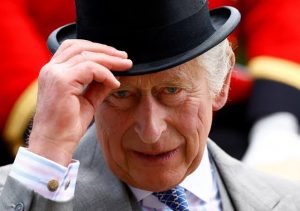British Prime Minister Liz Truss is currently facing a crisis following the announcement of a mini-budget that forced her to sack her Chancellor of Exchequer Kwasi Kwarteng, a nuclear option for an incumbent PM. The UK markets are in freefall following the mini-budget and the IMF has revealed they are closely monitoring the situation in the country.
News has already emerged that the ruling Conservative Party MPs are planning to replace Truss, less than two months after she became the Prime Minister. Rishi Sunak has become the frontrunner to replace Truss in 10 Downing Street, but removing a sitting Prime Minister who does not want to be removed may give rise to a problem.
Also Read: British PM Liz Truss in crisis: Here’s why
Let’s take a look at what are the available options for the removal of Liz Truss as the British Prime Minister.
Resignation
The first option that comes to mind is a resignation from Liz Truss from her role as the Prime Minister. However, it sounds far-fetched currently. However, considering the fact that both Boris Johnson and Theresa May won no-confidence votes before they tendered their resignation, it is not impossible in this case.
Vote of no confidence
This could be tricky for many reasons. The last Conservative Party leader who was forced out of his position was Iain Duncan Smith in 2003. Similar to Liz Truss, Smith was the choice of the party and later faced problems in maintaining authority.
However, it would not be an option in 2022, courtesy of the backbench 1922 Committee. In Boris Johnson’s case, when he became the PM, the committee determined to provide him with a year before a challenge could be made to his position.
However, while this remains an undocumented rule, it could be changed provided enough reactions from party MPs.
A coronation
According to reports in the UK, several MPs of the Conservative Party are of the opinion that Truss was chosen by the membership and they would not have the MPs declare her successor.
The Conservative Party’s constitution, in Schedule 2, says that the leader is elected by the membership, which is 800 strong. Rescinding the rule will require a two-thirds majority of that 800-strong membership, who are not in the mood to let their power slip away.
One contender
This could very well become a possible strategy for the rebelling MPs, who could be shortlisting two candidates for contesting against Liz Truss. One of these candidates would be dropping out of the contest, similar to Andrea Leadsom’s decision in 2016 against then-PM Theresa May.
Also Read: British Prime Minister Liz Truss facing crisis: A timeline
This would result in the remaining candidate becoming leader by acclamation.
Outright election
The Conservative Party is currently trailing by 30 points in the polls and the PM could be deciding to let the voters decide their leader with an election. The incumbent PM will not be needing a vote in the Parliament to decide in favour of an election since the Fixed Term Parliaments Act was revoked.







